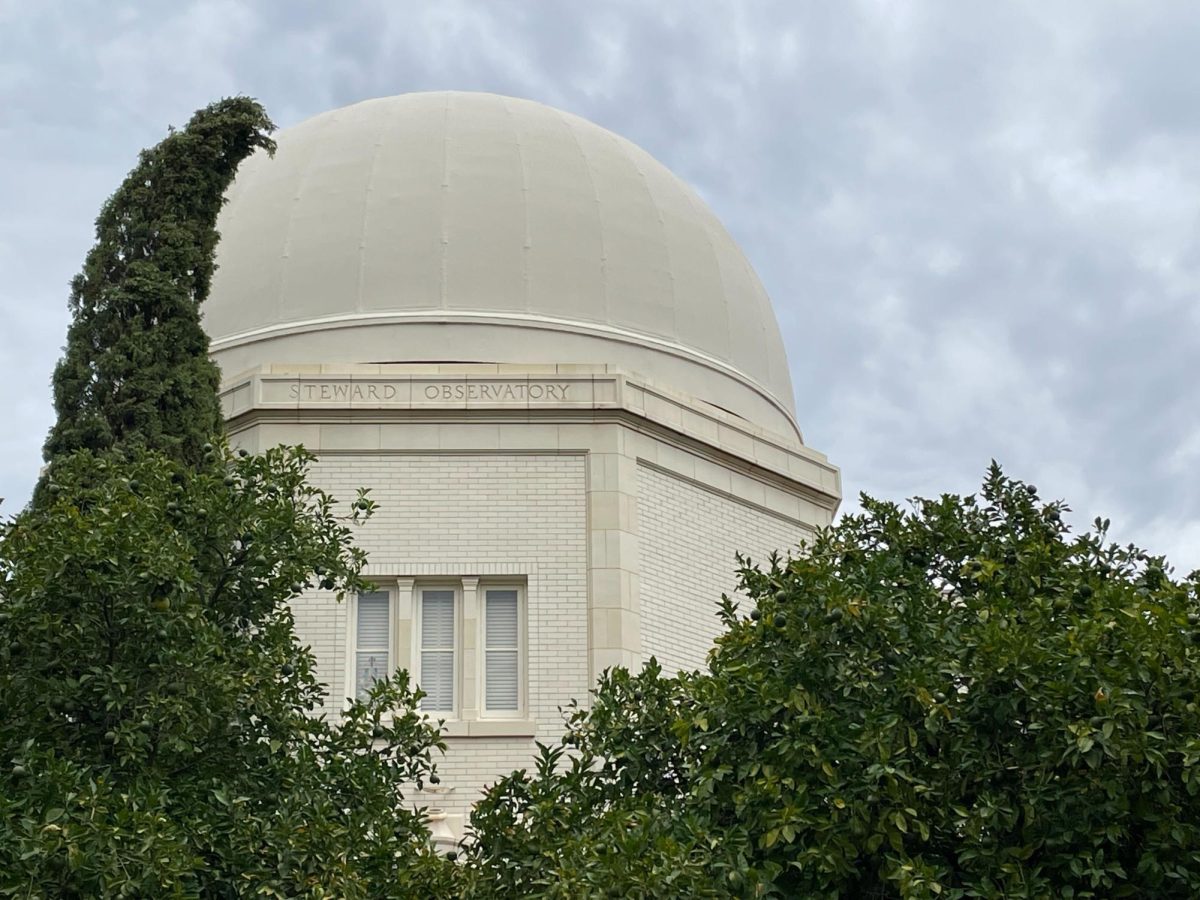The University of Arizona and NASA’s Johnson Space Center recently signed a Space Act Agreement together which formalized a stronger relationship between the two. This will open up opportunities for research groups across various departments at the UA for human spaceflight related research.
In 1960, the Lunar and Planetary Laboratory was founded to help support the United States’ mission to land a person on the moon. The UA played an important role in preparing NASA for human space flight, including helping to train astronauts and creating the most accurate lunar atlases at the time to select optimal landing sites and exploration paths.
The Space Act Agreement marks a return to that mission of supporting human space flight. With the Johnson Space Center partnership, there will be more support for researchers at the UA to pursue human space flight related projects.
The Space Analog for the Moon and Mars is a prime target for future collaborations with Johnson. Spearheaded by Kai Staats, research director for SAM, this world’s only operating hermetically sealed and fully pressurized habitat could be the next training ground for astronauts headed to the moon or Mars. This enclosure built at Biosphere 2 could give astronauts a feel for what it would be like to stay at a permanent enclosure on the moon or Mars. Staats feels that the Space Act Agreement will open up opportunities for information dissemination and design that will advance the Mars habitat.
Along with helping train future astronauts, the UA may also play a role in training the next generation of space surgeons. The Arizona Program for Exploration Medicine and Surgery is a unique fellowship at the UA that trains procedural physicians in aerospace medicine to prepare them for deep space medicine and surgery.
“We can teach surgical or procedural physicians the fundamentals of aerospace medicine and try to get them experience at commercial space flight providers such as SpaceX, and then also get them hooked in and researching so that in the next 10 to 20 years, when people are back on the moon or in deep space flight towards Mars, we know how to take care of them,” said Eric Petersen, founding director of APEX.
Currently, APEX is most closely partnered with the private sector but they are constantly looking for opportunities with NASA, and Petersen has a lot of ideas for research in collaboration with Johnson. He has ideas to pursue research identifying how pathology develops in spaceflight and how to develop tools and techniques given the constraints of spaceflight to prevent pathology.
Petersen presented another hypothetical project as a result of the partnership with Johnson and said that if NASA develops a test medical kit for an Artemis mission, the UA could stress test that kit by setting up a simulation of injured astronauts inside the SAM habitat.
While the SAM habitat looks to prepare astronauts for habitation on the moon or Mars, the UA Space and Terrestrial Robotic Exploration Laboratory is looking at how to set up semi-permanent structures on the moon with the use of robots.
“What we find is that the moon can be a great target for building all kinds of facilities if you want to build a next-generation space telescope, […] radio observatory or communications link,” said Jekan Thanga, head of SpaceTREx Laboratory.
One resource Thanga is excited for, which could be provided by the Space Act Agreement, is the use of NASA’s Deep Space Network to be able to communicate with spacecraft outside of Earth’s orbit.
Though the Space Act Agreement will most directly affect researchers, it will also affect graduate and undergraduate students interested in space flight research. SpaceTREx has many projects going on with both undergraduate and graduate students involved, and the SAM project just had its first person receive their PhD while working on the project. And although APEX currently only has research fellows, they are looking for motivated graduate and undergraduate students interested in space medicine research to join their efforts.
Timothy Swindle, director of the Arizona Space Grant, is specifically excited about the implications of the Space Act Agreement on both graduate and undergraduate students to get more involved in NASA science and engineering.
“A number of our students end up going to Johnson Space Center, so [the Space Act Agreement] is a mechanism that we can maybe [use to] get more internships and fellowships so that we can perhaps provide more of a pipeline which both [Johnson Space Center] and [the UA] would like,” Swindle said.
With a broad range of researchers across disciplines working on space projects, Erika Hamden, director of the UA Space Institute, is working to bring researchers together to foster more collaboration.
“As these things get more competitive, you have to have better science questions and better projects that you’re working toward, so having a very broad range of people developing missions makes them better,” Hamden said.
Swindle added that “the Space Act Agreement is another way to make opportunities available and to do it in a way that more people are aware of it and take advantage of it.”
The push for human space flight at NASA with the Artemis missions and now at the UA with the Space Act Agreement indicates a new age of human space exploration.
“When I talk to people who are into space now, a lot of them were inspired by the Apollo missions. Who are the people that are going to be inspired by these space missions and what are they going to do 20 years in the future?” Hamden said.
Follow the Daily Wildcat on Instagram and Twitter (X)









